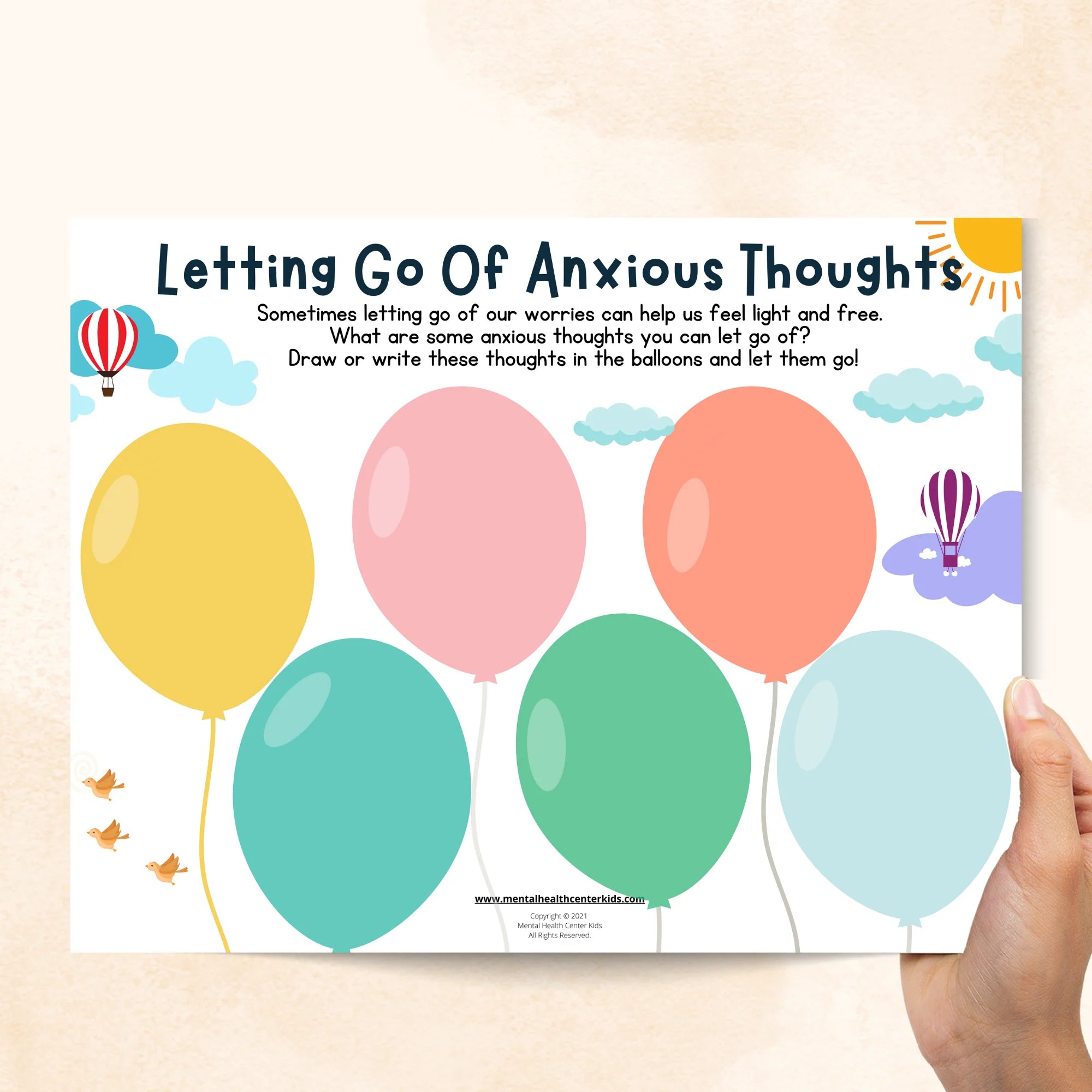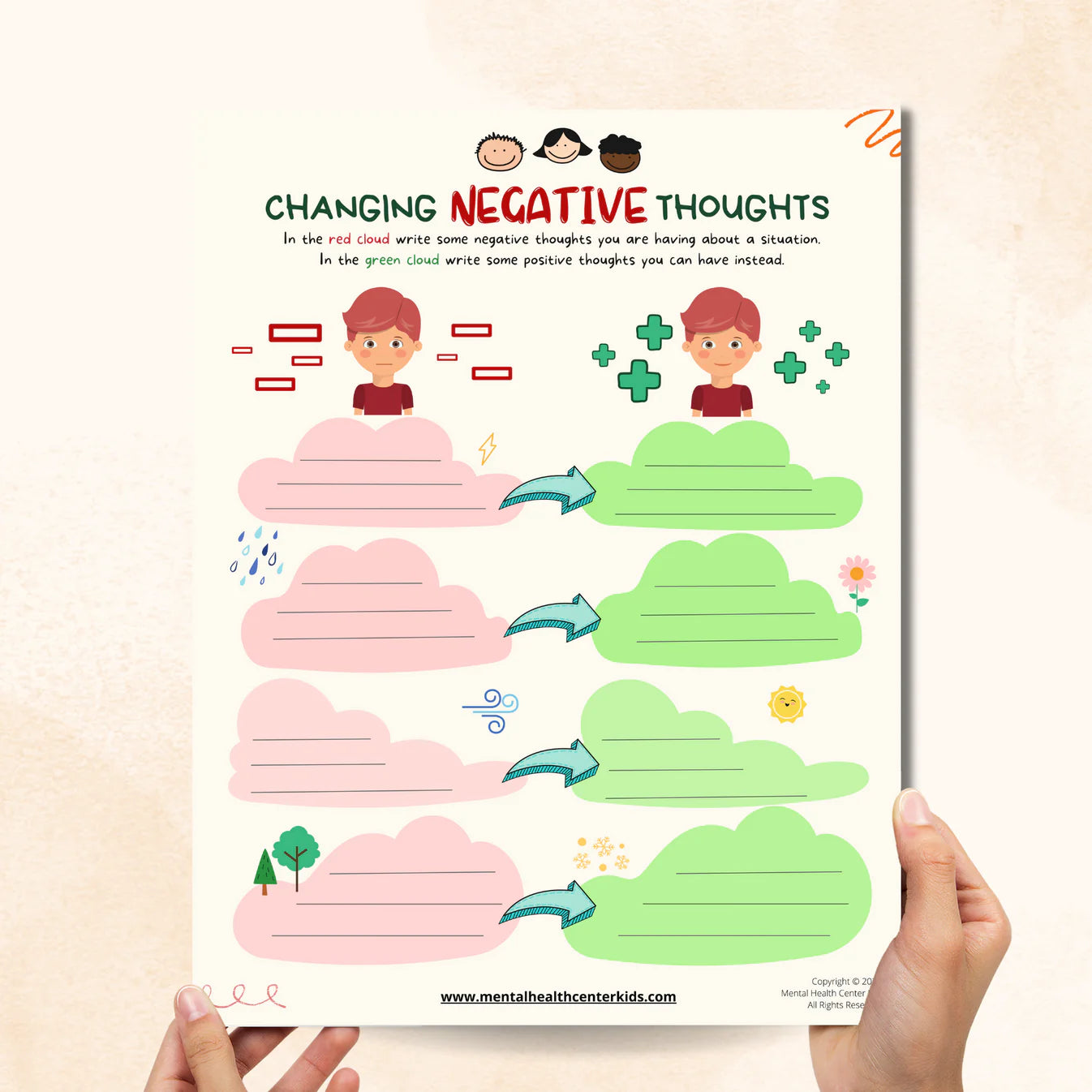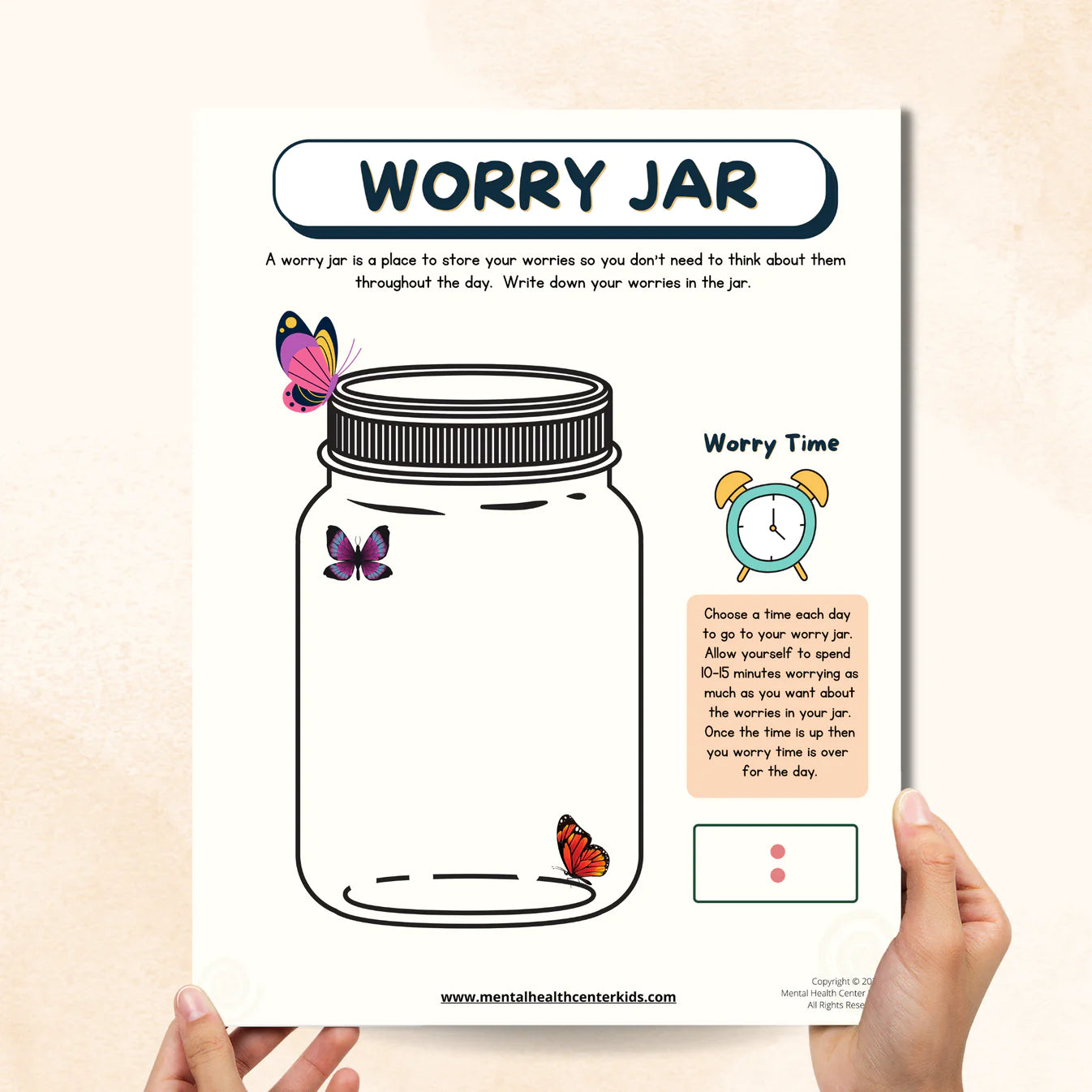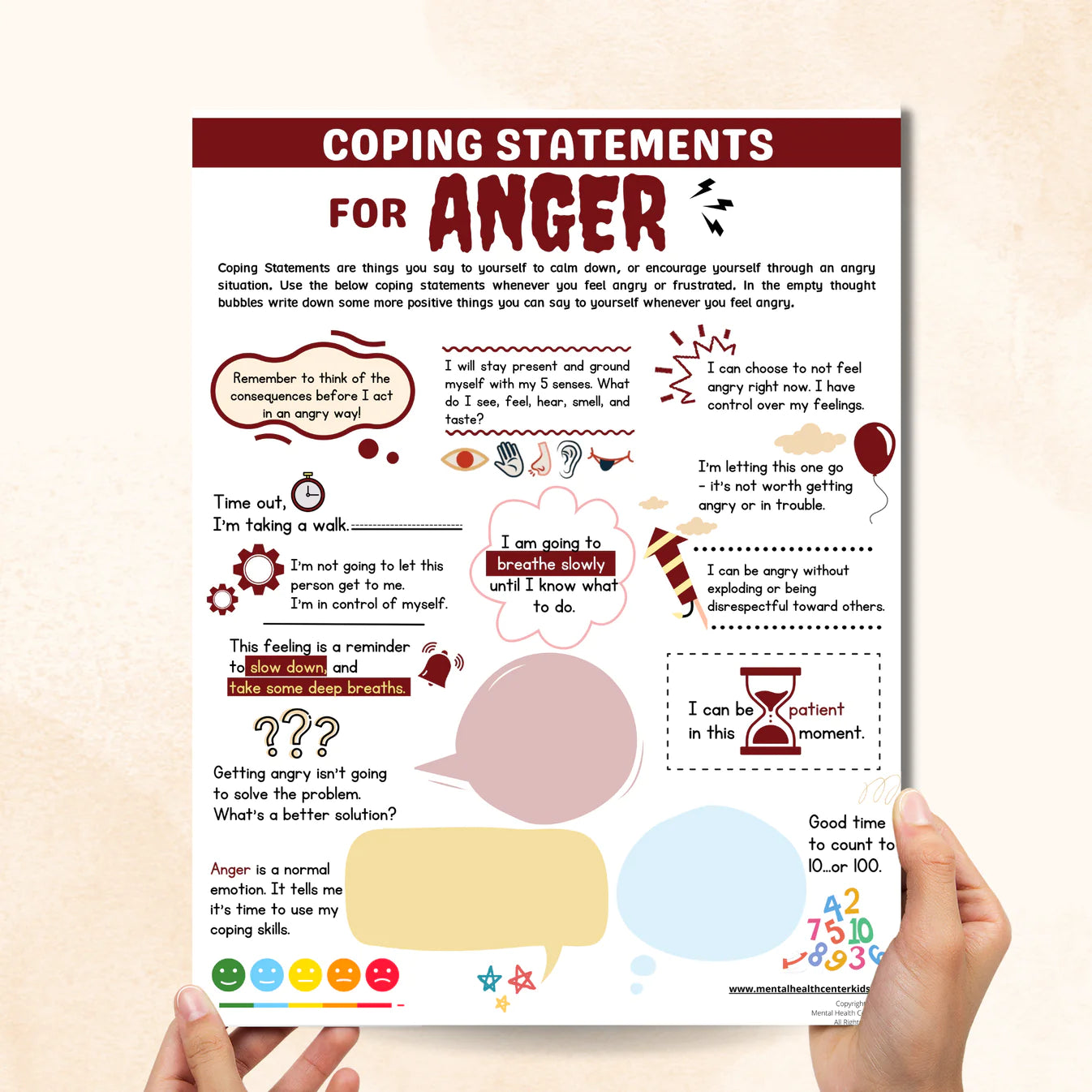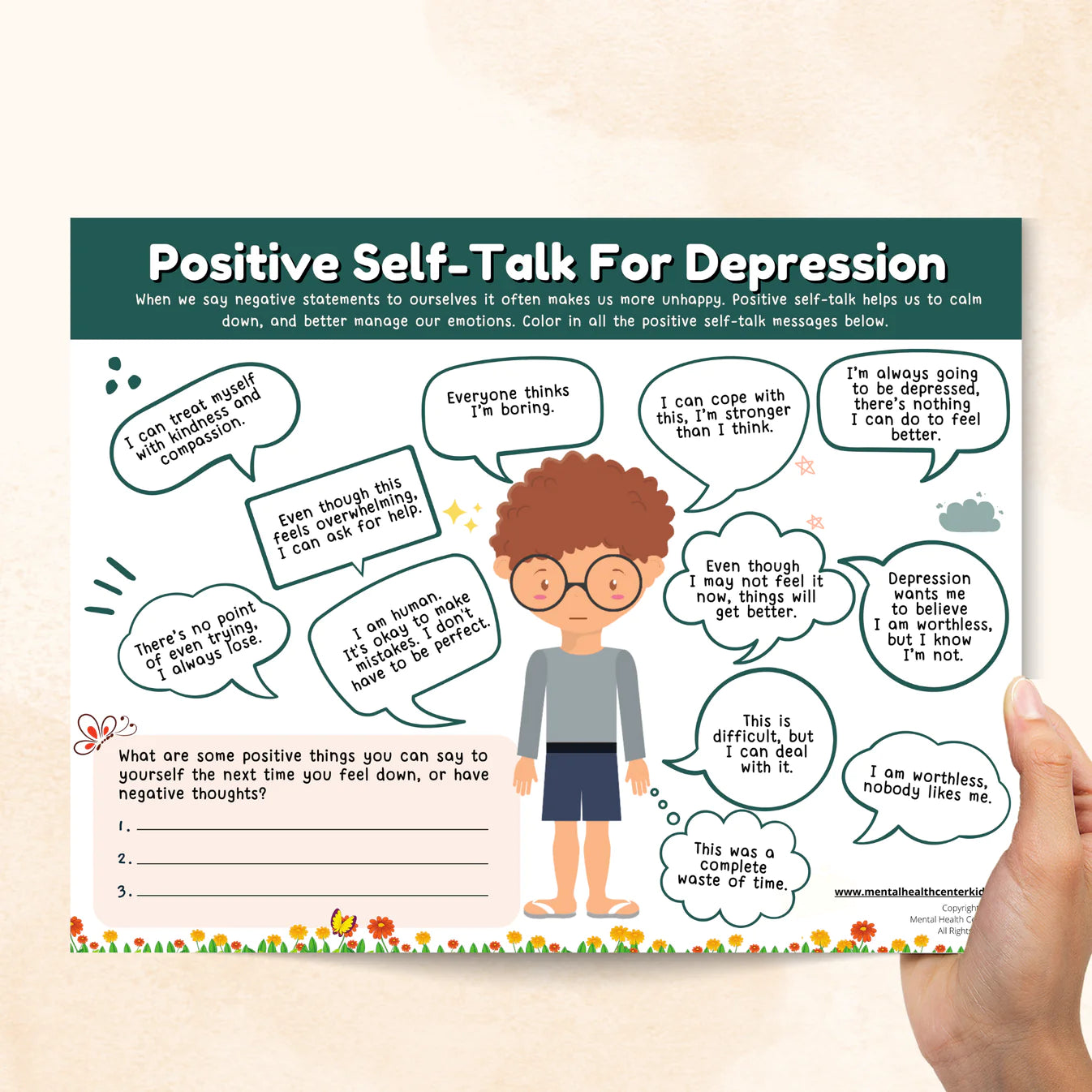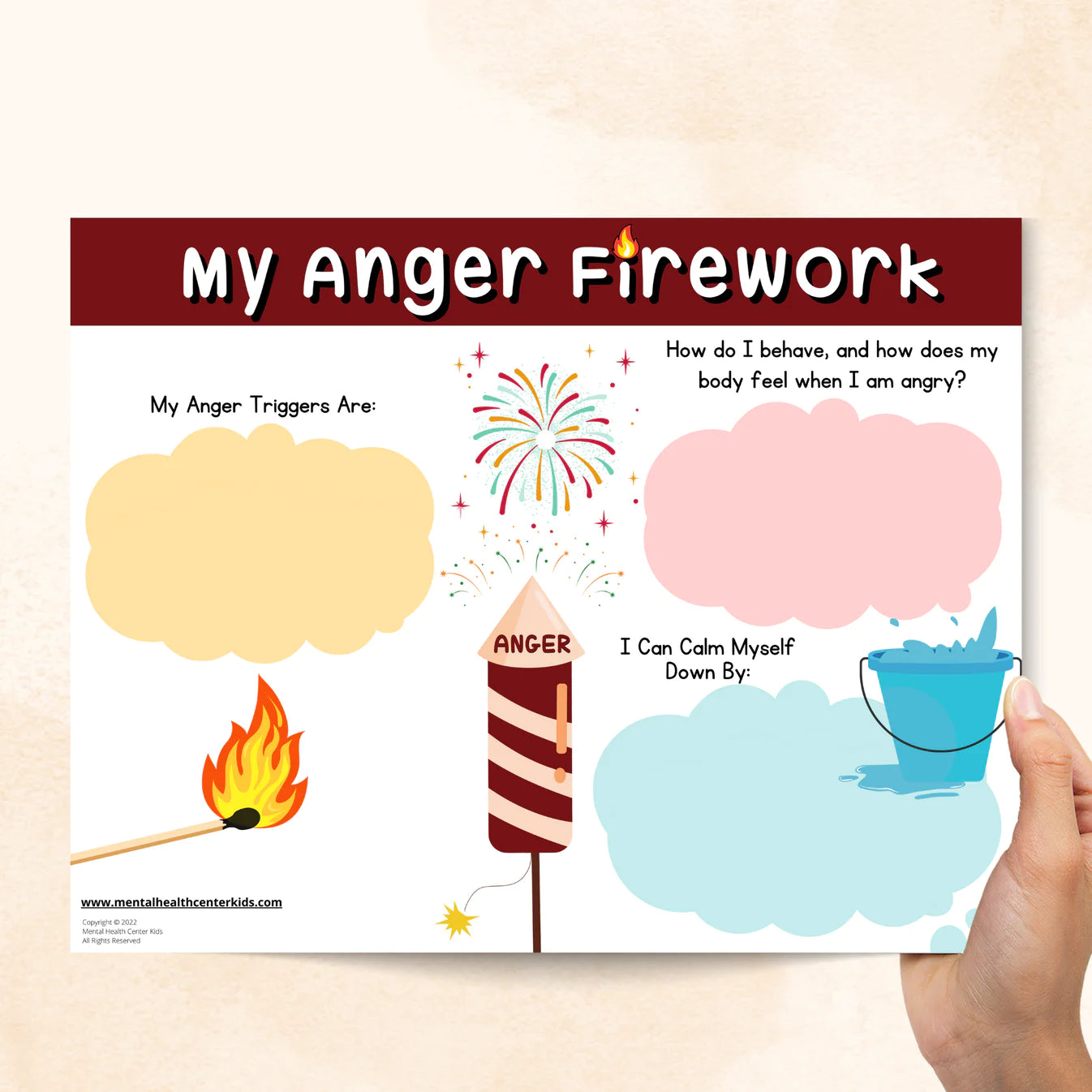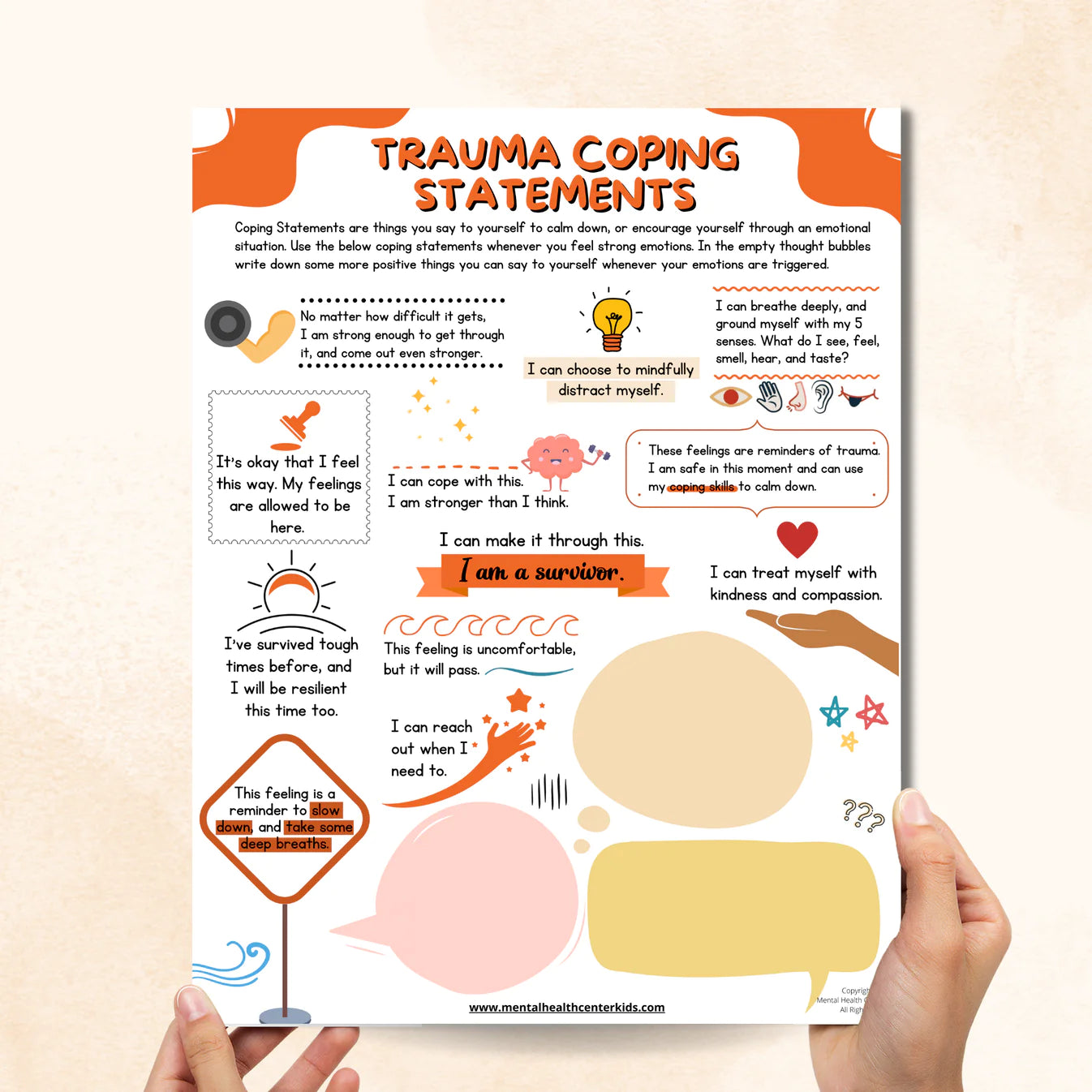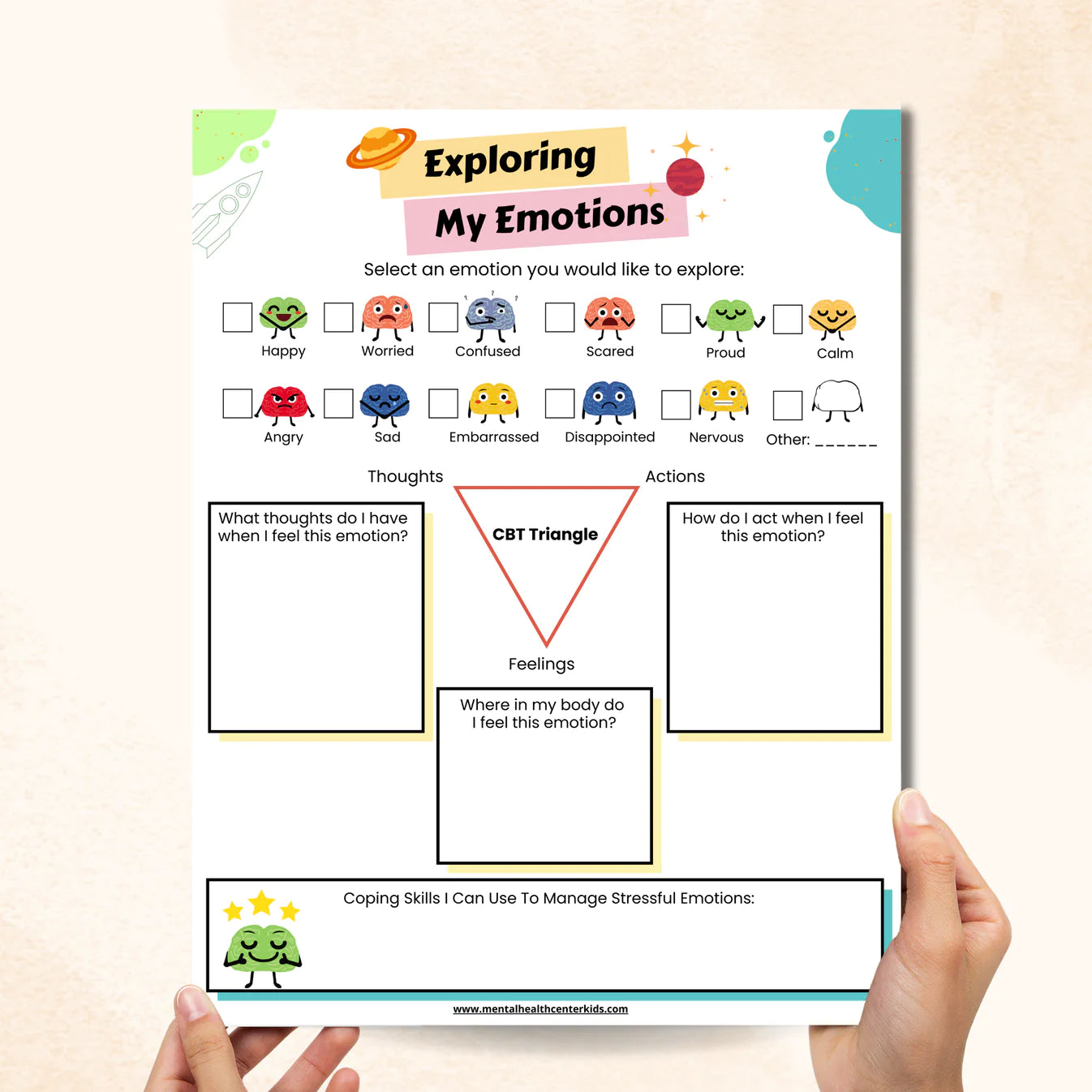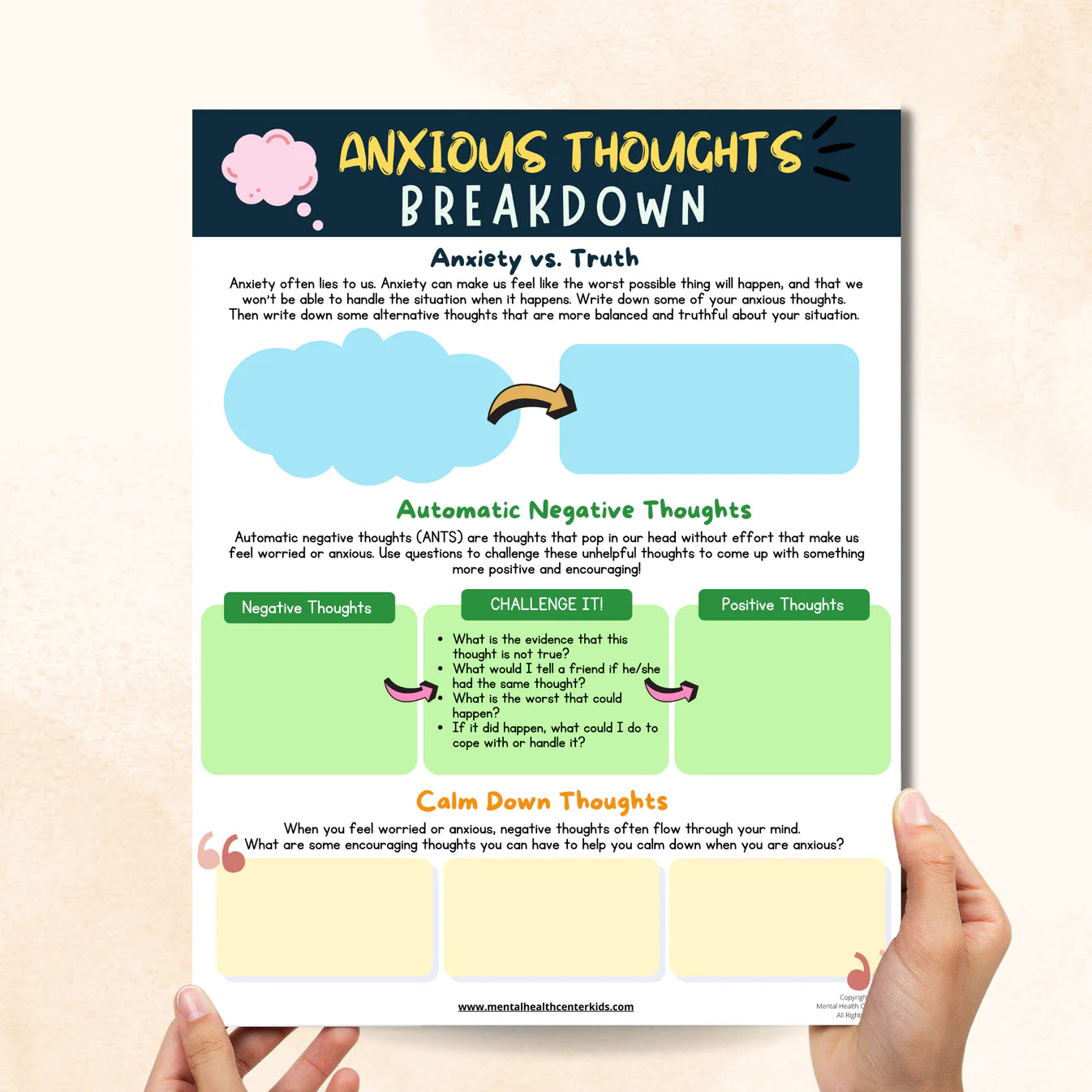|
Key Takeaways:
- CBT worksheets help improve a child’s conflict resolution skills and emotional regulation during stressful encounters.
- The benefits of using CBT worksheets include improving a child’s self-control and social skills and providing a simpler introduction to CBT.
- Some helpful CBT worksheets for kids include coping statements for anger, the physical symptoms of anxiety, and positive self-talk for depression.
|
It isn’t uncommon for a child to experience stress and anxiety at home or in school, but when emotions spiral, they can be difficult to control. Using CBT worksheets for kids can help curb self-destructive coping mechanisms and change negative thought patterns.
If your child struggles with anxiety, depression, and stress, this helpful guide is for you. Explore these ten simple, printable cognitive behavioral therapy worksheets for kids and discover how to use them.
What are CBT Worksheets for Kids?
CBT worksheets for kids aim to improve a child’s problem-solving skills when stress-related challenges arise. They can help children reframe their thought patterns and reactions to negative experiences, leading to improvements in self-control, coping skills, and emotional awareness.
What are the Benefits of Using CBT Worksheets for Kids?
Just as cognitive behavioral therapy is an effective treatment for psychological issues in teenagers and adults, it’s just as impactful for children. CBT for kids is effective in treating psychopathologies in children like anxiety, obsessive-compulsive disorder, eating disorders, self-harm, and school phobias [*].
Here are a few other benefits of using CBT worksheets for kids:
-
Improved self-control. Because CBT worksheets aim to help children recognize negative thought patterns, they can learn to refrain from engaging in self-destructive behavior in the future. They’ll regulate their emotions better in stressful situations.
-
Better social skills. Anxiety and depression can prevent a child from exercising their social skills. Through CBT worksheets, they can learn to express themselves more confidently in social situations and handle conflicts with more grace.
-
Simpler learning experience. Explaining CBT to children can be challenging, especially when they are very young. By using worksheets, your child can visualize concepts and grasp them in simpler, more manageable ways.
-
High success rate. According to meta-analyses, using CBT as the primary method for treating anxiety disorders in children has a 60% success rate [*]. Through continued CBT, children suffering from symptoms of PTSD, anxiety, and depression may no longer meet the criteria for diagnosis within four years.
-
Tailored treatment. There is no one “right” way to use CBT worksheets with a child. What doesn’t work for one may work for another. Ultimately, CBT is a highly customizable treatment you can tailor to suit your child’s specific needs.
12 Printable CBT Worksheets for Kids
Whether your child is new to CBT or is already undergoing therapy, these printable CBT worksheets for kids can supplement their healing journey.
1. Letting Go of Anxious Thoughts
Anxiety can be crippling for a young child and it’s essential to find healthy, relaxing ways to let go. Tap into your child’s visual thinking by using our Letting Go of Anxious Thoughts worksheetsite.
When they are anxious, ask them to envision six balloons. Using our worksheet, write six of their negative thoughts or fears onto these balloons and visualize letting them go. As they drift away, encourage them to relax their minds.
2. Changing Negative Thoughts to Positive Thoughts
Changing negative thoughts into positive thoughts starts with identifying and acknowledging the former. With your child, list the persistent negative thoughts they have and reconfigure them into positive ones.
For instance, your child might write, “I failed my exam and I’m not smart enough.” You can turn this negative thought into a positive one by saying, “I failed my exam but I can study harder and do better next time.”
3. Physical Symptoms of Anxiety
Most children won’t understand that anxiety can manifest physically. By studying the physical symptoms of anxiety and listing down other occurrences, your child can identify early warning signs of a panic attack or depressive state.
4. Happy Place Worksheet
When in a depressive or anxious state, thinking of a happy place can help your child calm down. As your child pictures their happy place, ask them to describe it according to their senses—what do they see? Hear? Smell?
Once your child is calm, reflect on how they feel and how the activity helped.
5. Anxiety Triggers Worksheet
Anxiety is often the result of a trigger. However, young children may struggle to identify what these triggers are. You can use our Anxiety Triggers Worksheet to identify these triggers and rate how anxious they make your child feel. Add triggers to the worksheet as necessary to help your child identify warning signs of anxiety or panic.
6. Worry Jar
Children should know that worrying is normal, but that spending too much time doing so can be detrimental to their mental health. With a worry jar, your child can reflect on their worries and dedicate enough time to sit with their negative feelings.
When their “worry time” is up, encourage your child to focus on letting go of their painful thoughts and focus on moving on.
7. Coping Statements for Anger
Anger is often considered a secondary emotion to more vulnerable feelings like hurt, betrayal, or disappointment [*]. When children learn to address and soothe their anger, they become better at identifying their true feelings underneath the rage.
Coping statements for anger can help a child return to a calmer state and reflect on why they are angry.
8. Positive Self-Talk for Depression
Children may think negatively for many reasons, one of them being depression. Encourage them to engage in positive self-talk for depression with phrases like, “I’m feeling down but can focus on feeling better,” and “My sadness makes me feel worthless, but I am not.”
Your child will learn to self-motivate and take the necessary steps to improve their depression.
9. Anger Firework
Anger can quickly spiral out of control, especially in children who haven’t learned to regulate their emotions. By using an anger firework to visualize the stages of anger, children can learn to manage outbursts before they lead to bigger problems.
10. Trauma Coping Statements
Trauma can have a lasting impact on young children that is challenging to reverse. Thankfully, through trauma coping statements and consistent work, children can learn to be at peace with their negative thoughts and develop the mindset of a hardworking survivor.
Use our worksheet to reinforce positive coping mechanisms and create helpful daily mantras for your child.
11. Exploring Emotions Worksheet
Children may feel discouraged from sharing how they feel when no one checks in on them. Use our exploring emotions worksheet to see where your child’s head is at and get to the bottom of why they feel a certain way.
Once your child identifies the core emotion, consider where in their body they feel this emotion, recognizing any physical manifestations of anxiety. Then, reflect on how they act when they feel this particular emotion. This worksheet uses a version of the CBT triangle to allow kids to explore the connection between their thoughts, feelings, and actions.
12. Anxious Thoughts Breakdown
Anxiety can seemingly appear out of nowhere and be challenging to control. By using our anxious thoughts breakdown worksheet, your child can better prepare themselves for this rollercoaster of emotions.
When writing down their anxious thoughts, your child can reflect on the situation at hand and consider their truthful thoughts. Then, you can help break down these worried thoughts by finding ways to challenge them and turn them into positive ones. This worksheet provides kids with three different ways to work through their anxious thoughts.
Help Your Kids Explore Their Feelings with These CBT Worksheets
It can be challenging to explain CBT to a child, but using CBT worksheets for kids can break it down into simpler, more manageable concepts.
Whether your child struggles with depression or anxiety or could simply use a helping hand in their development, we encourage you to explore our collection of CBT worksheets.
Sources:
- Seligman LD, Ollendick TH. “Cognitive-Behavioral Therapy for Anxiety Disorders in Youth.” Child and Adolescent Psychiatric Clinics of North America, 2011.
- Arne Kodal, Krister Fjermestad, Bjelland I, et al. “Long-term effectiveness of cognitive behavioral therapy for youth with anxiety disorders.” Journal of Anxiety Disorders, 2017.
- Sukhodolsky D, Smith S, McCauley S, et al. “Behavioral Interventions for Anger, Irritability, and Aggression in Children and Adolescents.” Journal of Child and Adolescent Psychopharmacology, 2021.




